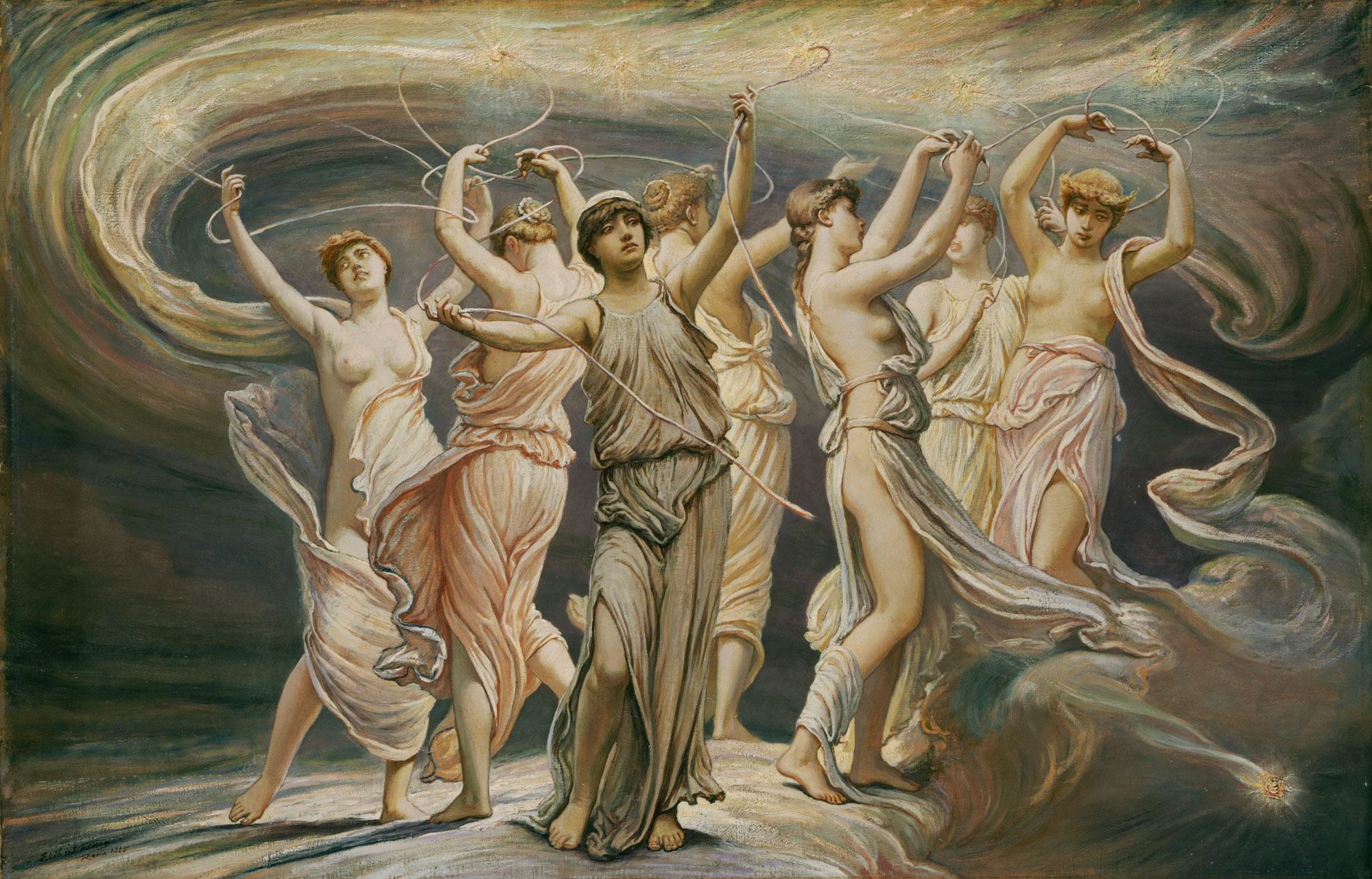APOD Robot wrote:
Perhaps the most famous star cluster on the sky, the bright stars of the Pleiades can be seen without binoculars from even the depths of a light-polluted city.
So what other star cluster could be as famous as the Pleiades?
Wikipedia wrote:
The Pleiades are a prominent sight in winter in the Northern Hemisphere, and are easily visible out to mid-Southern latitudes.
They have been known since antiquity to cultures all around the world,[12] including the Celts, Hawaiians (who call them Makaliʻi[13]), Māori (who call them Matariki), Aboriginal Australians (from several traditions), the Persians, the Arabs (who called them Thurayya[14]), the Chinese (who called them 昴 mǎo), the Quechua, the Japanese, the Maya, the Aztec, the Sioux, the Kiowa,[15][16] and the Cherokee. In Hinduism, the Pleiades are known as Krittika and are associated with the war-god Kartikeya. They are also mentioned three times in the Bible.[17]
The earliest-known depiction of the Pleiades is likely a Northern German bronze age artifact known as the Nebra sky disk, dated to approximately 1600 BC.[18] The Babylonian star catalogues name the Pleiades MULMUL (𒀯𒀯), meaning "stars" (literally "star star"), and they head the list of stars along the ecliptic, reflecting the fact that they were close to the point of vernal equinox around the 23rd century BC. The Ancient Egyptians may have used the names "Followers" and "Ennead" in the prognosis texts of the Calendar of Lucky and Unlucky Days of papyrus Cairo 86637.[19] Some Greek astronomers considered them to be a distinct constellation, and they are mentioned by Hesiod's Works and Days,[20] Homer's Iliad and Odyssey,[21] and the Geoponica.[22] Some scholars of Islam suggested that the Pleiades (ath-thurayya) are the "star" mentioned in Sura An-Najm ("The Star") of the Quran.[23]
So the Pleiades are well-known and famous all right!

They are so unusual because the bright cluster members are relatively bright in our skies as about fourth magnitude, and all the dominant stars are blue, and the bright stars are close together and form the cutest little tiny "dipper" in the sky, like a child's toy version of the Big Dipper. The stars of M45 so extremely obviously belong together.
The lovely reflection nebulosity is quite invisible to the eye, even though the extended nebulosity around Merope might possibly, possibly be visible in an extremely dark sky. But I don't think that any of the ancient cultures that loved the Pleiades ever saw any "cloudiness" around them.
The Pleiades. Not today's APOD.
But today's APOD shows us the nebulosity around the Pleiades in a great way. I love the "streakiness" of the nebula. I read somewhere that magnetism might have something to do with the "combed hair" appearance of the nebulas, but I don't know if that is true. Note, however, that the obvious Merope Nebula curves down and to the left around the star, as if Merope was moving down and to the left. And that, indeed, is exactly what Merope and the rest of the Pleiades are doing.
I'm posting the picture at left because the stars are annotated, but please look at today's APOD as well. I dare not post the APOD here, because I think it is too large for me to be allowed to post it (over 500 KB), but please look at the APOD again and note the fantastic details in the dust. Also note that the blue nebula turns greyish some distance from the stars. In the picture at left, the blue nebulosity mostly disappears at the point where the dust turns grey in the APOD.
Beautiful APOD!
Ann
 M45: The Pleiades Star Cluster
M45: The Pleiades Star Cluster
